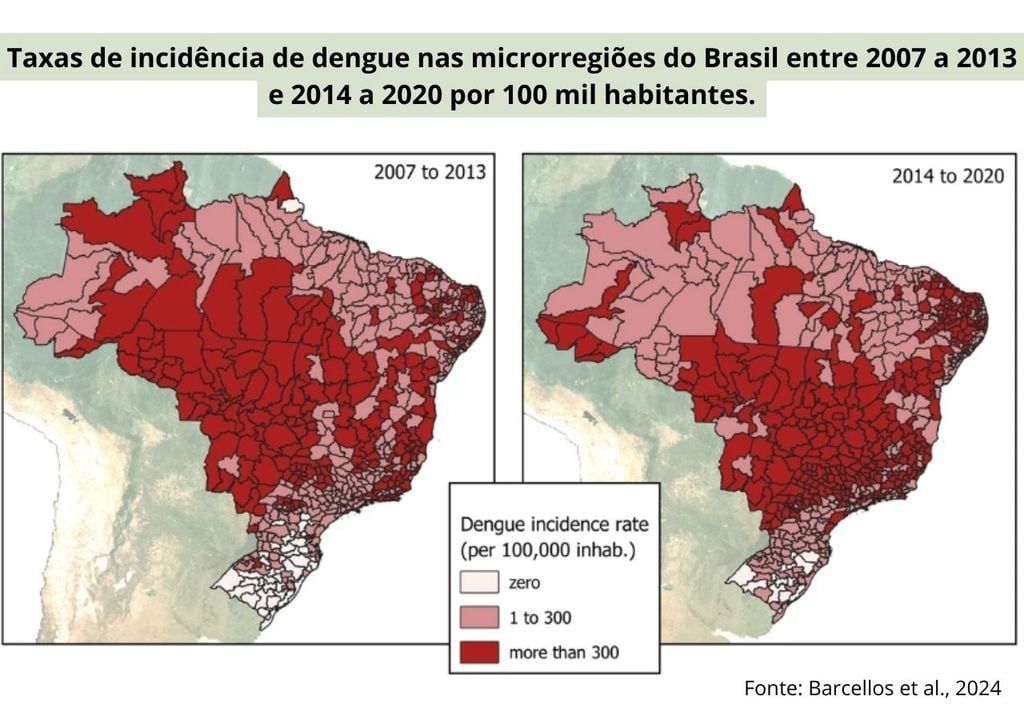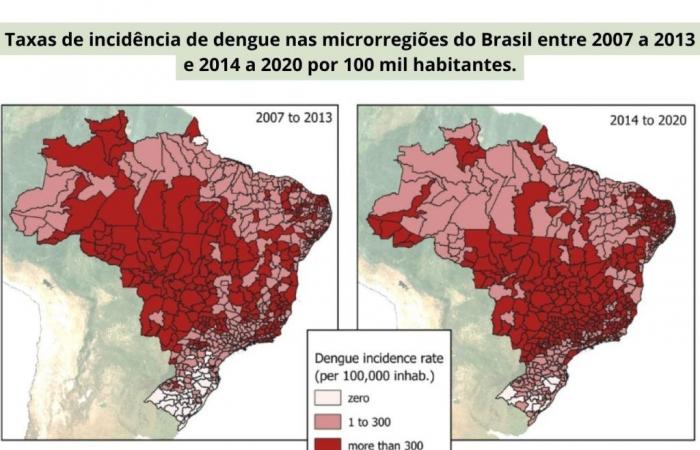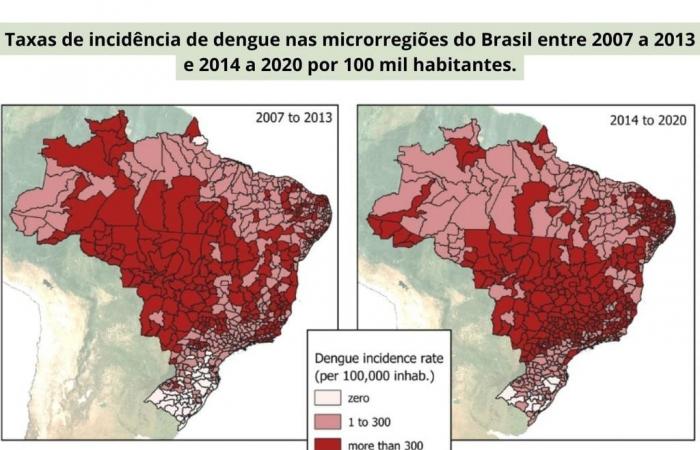Until last Monday (18), Brazil recorded more than 1.8 million cases of dengue feveraccording to the Arbovirus Monitoring Panel of the Ministry of Health. Therefore, the first three months of 2024 have already surpassed the total number of cases from the previous year.
The last historical record was recorded in 2015when Brazil recorded more than 1.6 million cases of dengue, and places where the disease was not so common before are experiencing high incidence of cases.
Expansion of dengue in Brazil vs Positive temperature anomalies
The increase in dengue cases in the country is being influenced by the constant hot flashes caused by climate change associated with urbanization and large circulation of people.
This was the conclusion of an article published in Nature’s Scientific Reports on climate change, thermal anomalies and the recent progression of dengue in Brazilcarried out by researchers from the Institute of Scientific and Technological Communication and Information in Health (Icict/Fiocruz) and the Barcelona Supercomputing Center, in Spain.
The study highlights that dengue has been spreading to the South and Central-West regions due to the occurrence of extreme events, such as dried It is floodsin addition to the expansion of the border economic toward Amazon through the construction of roads and the degradation of forests.
According to Christovam Barcellos, researcher at Fiocruz and author of the study, temperatures above normal have already become a constant, even in places where it was not common.
To understand the new standard of dengue cases in Brazil, Fiocruz researchers used the data mining technique. They analyzed both climate indicators and demographic records from the South and Central-West regions, that experienced an increase in the number of cases between 2014 and 2020.
For example, in the interior of Paraná, Goiás, Distrito Federal and Mato Grosso do Sul, places that faced around five days of heat anomaly in the summer, now go from 20 to 30 days with temperatures above normal.
More than 300 cases per 100 thousand inhabitants
At the moment, the process of expansion of the dengue transmission area appears to be irreversibleas once the virus and vector are introduced, it is unlikely to return to a scenario of streaming zero. This situation is even more serious in micro-regions with higher incidence rates, with more than 300 cases per 100 thousand inhabitants, in which around 77% of micro-regions tend to remain at rates considered epidemic from 2007 to 2013 and from 2014 to 2020.

At the moment, 52% of the country’s microregions (292/553) are in the dengue epidemic range and 46% (258/553) are in the medium to low incidence range, in which “sporadic or uncertain risk” is observed. In the last period, only three microregions remained without dengue casesall located in the extreme south of the country.
Temperature is an environmental factor that regulates mosquito infestation and, therefore, dengue transmission. The reproduction of the Aedes aegypti is viable between 18 and 33 °Cand the ideal range for transmission maintenance is 21 to 30 °C, a standard that occurs in much of Brazil.
Within the Brazilian Cerrado there are cities that already have heat islands, suburban areas or outskirts with poor sanitation conditionsmaking it more difficult to combat the mosquito, concludes Barcellos.
Furthermore, the study also highlights the role of deforestation in the spread of dengue cases. In general, areas whose vegetation cover has been removed are usually occupied by people. In these places, urbanization and increased circulation of people favors global warming, in addition to facilitate transmission.
News reference:
Barcellos, C., Matos, V., Lana, RM et al. Climate change, thermal anomalies, and the recent progression of dengue in Brazil. Scientific Reports, 14, 5948 (2024).
Tags: Increase number dengue cases reflection high temperatures deforestation
--






